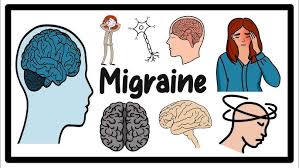Migraine is a debilitating condition that affects millions of people worldwide. It is more than just a headache, as it is often accompanied by nausea, vomiting, light sensitivity, and sound sensitivity. Chronic migraine can be disabling and may prevent many, especially women, from contributing to working life. Unfortunately, it often takes a long time for migraine patients to find a treatment that works well for them.

Researchers at the Norwegian Center for Headache Research (NorHead) have used data from the Norwegian Prescription Register to look at which medicines best prevent migraine in people in Norway. The study, led by Professor Marte-Helen Bjørk at the Department of Clinical Medicine, University of Bergen, found that some established and cheaper medicines can have a similar treatment effect as the more expensive ones.
The researchers used national register data from 2010 to 2020 to estimate treatment effect. They measured this by looking at the consumption of acute migraine medicines before and after starting preventive treatment and investigated how long the people with migraine used the different preventive treatments. A total of over one hundred thousand migraine patients were in the study.
As a rule, so-called beta-blockers are used as the first choice to prevent migraine attacks, but the researchers found that especially three medicines had better preventive effect than these: CGRP inhibitors, amitriptyline, and simvastatin. The latter two medicines are also established medicines used for depression, chronic pain, and high cholesterol, respectively, while CGRP inhibitors are developed and used specifically for chronic migraine.
CGRP inhibitors are more expensive than the other medicines. In 2021, their reimbursement amounted to 500 million NOK (not including discounts given by pharma companies). “Our analysis shows that some established and cheaper medicines can have a similar treatment effect as the more expensive ones. This may be of great significance both for the patient group and Norwegian health care,” says Bjørk.The researchers at NorHead have already started work on a large clinical study to measure the effect of established cholesterol-lowering medicines as a preventive measure against chronic and episodic migraine. This study could have significant implications for the treatment of migraine and could help many people find relief from this debilitating condition.
What is migraine?
Migraine is a neurological disorder characterized by recurrent moderate to severe headaches, often unilateral and pulsating. It is not just a bad headache, but a complex condition that can be disabling. Migraine attacks can last from hours to days and are often accompanied by symptoms such as nausea, vomiting, and sensitivity to light and sound. Some individuals may experience a premonitory period of sensory disturbance, known as an aura, before the onset of the headache. The causes of migraines are not fully understood, but they are believed to be influenced by a combination of genetic and environmental factors. Migraine can be triggered by various factors such as stress, certain foods, hormonal changes, and changes in weather. The condition is highly heterogenous in its clinical presentation and can range from episodic discrete attacks to chronic disease. Treatment for migraines may involve a combination of medications, self-help remedies, and lifestyle changes.